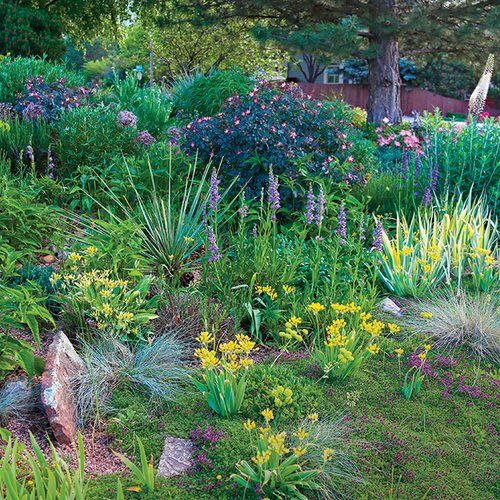Water Wise Gardening

In today's world where water resources are becoming increasingly scarce, it is crucial to adopt water-wise gardening practices. Water-wise gardening, also known as xeriscaping or drought-tolerant gardening, involves designing and maintaining gardens that require less water while still providing beauty and functionality. In this article, we will explore some tips and strategies for creating a water-wise garden that not only conserves water but also thrives in dry conditions.
Choose drought-tolerant plants:
Selecting plants that are well-suited to your climate and require less water is a key aspect of water-wise gardening. Look for native or adapted plant species that have evolved to thrive in your region's specific conditions. These plants have developed mechanisms to withstand drought and require minimal supplemental watering.
Group plants with similar water needs:
Efficiently manage water usage by grouping plants together based on their water requirements. This practice, known as hydrozoning, ensures that plants with similar moisture needs are planted in close proximity. By doing so, you can provide targeted watering to specific zones, reducing water waste and optimizing plant health.
Improve soil quality:
Enhance your soil's ability to retain moisture by incorporating organic matter such as compost or well-rotted manure. Amending the soil with organic matter improves its structure, allowing it to hold water more effectively and reducing the need for frequent irrigation.
Mulch your garden beds:
Apply a layer of organic mulch, such as wood chips or straw, around your plants. Mulch acts as a protective barrier, reducing evaporation from the soil surface and suppressing weed growth. It helps retain soil moisture, keeping the roots of your plants cool and hydrated.
Install efficient irrigation systems:
Consider installing water-efficient irrigation systems like drip irrigation or soaker hoses. These systems deliver water directly to the plant's root zone, minimizing evaporation and ensuring that water is targeted where it is needed most. Use a timer or moisture sensor to automate watering and prevent overwatering.
Practice smart watering techniques:
Water your garden during the early morning or late evening when temperatures are cooler, reducing evaporation. Water deeply and infrequently to encourage deep root growth, rather than shallow, frequent watering. This helps plants become more resilient to drought conditions.
Capture and reuse water:
Collect rainwater in barrels or cisterns to use for watering your garden. Direct downspouts from your roof towards garden areas, and consider installing a rain garden to capture and absorb excess water runoff.
Control weeds and manage plant health:
Weeds compete with your plants for water and nutrients. Regularly remove weeds from your garden to reduce water loss. Additionally, keep your plants healthy by promptly addressing pest or disease issues. Healthy plants are more efficient at utilizing water.
Monitor and adjust watering:
Regularly monitor the moisture levels of your soil using a moisture meter or by performing a simple soil moisture test. Adjust your watering schedule accordingly, watering only when necessary. Be mindful of weather conditions and adjust watering during periods of rain or high humidity.
Conclusion:
Water-wise gardening is not only an environmentally responsible choice but also a practical and beautiful way to create a thriving garden in dry conditions. By selecting drought-tolerant plants, optimizing irrigation, improving soil quality, and practicing smart watering techniques, you can conserve water while still enjoying a vibrant and sustainable garden. Embrace water-wise gardening and make a positive impact on our precious water resources.
Choose Lawnber for Thorough Lawn Care
To maintain your yard as lush and healthy as possible, contact Lawnber for easy, quick and reliable online pricing and booking. Applications are available year-round through our programme to maintain your lawn's overall health. Our professional crews are experienced in lawn care and ready to provide you with weekly services after you sign up. We provide simple-to-use online features to help you connect with the service crews and manage your services. We also provide real-time status updates to you for peace of mind that your lawn is getting taken care of. To learn more, get in touch with Lawnber